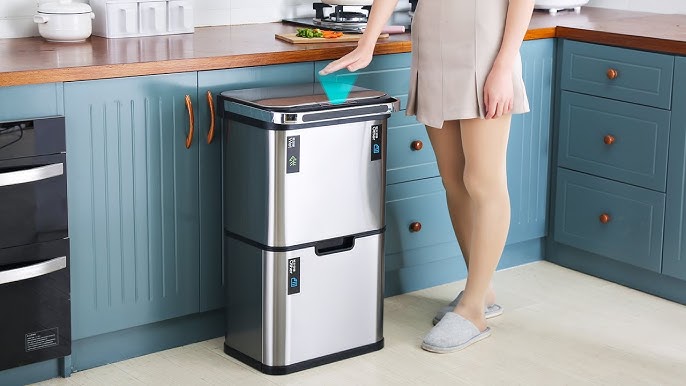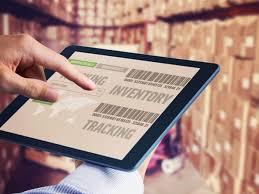In today’s fast-paced world, finding time to keep your home clean can be challenging. Thankfully, automation and smart home technology have revolutionized household chores, allowing us to maximize efficiency in our cleaning routines. Whether you’re a tech enthusiast or someone simply looking to save time, automating your cleaning tasks can bring a significant improvement to your daily life. This guide will explore how to set up and optimize an automated cleaning routine, ensuring that your home stays spotless with minimal effort on your part.
1. Understanding the Benefits of an Automated Cleaning Routine
Time-Saving Convenience
- Reduced Manual Effort: Automated cleaning devices such as robotic vacuums, smart mops, and self-cleaning appliances significantly reduce the time and effort required for household chores.
- Scheduled Cleaning: Smart devices can be programmed to clean at specific times, even when you’re not at home, ensuring a consistently clean environment.
Improved Cleaning Efficiency
- Precision Cleaning: Smart cleaning devices often come equipped with sensors and mapping technology, allowing them to navigate your home with precision and clean more thoroughly than manual efforts.
- Consistent Performance: Automation ensures that cleaning tasks are performed regularly and consistently, maintaining a higher standard of cleanliness.
Enhanced Control and Customization
- Remote Management: Many smart cleaning devices can be controlled via smartphone apps, enabling you to start, stop, or customize cleaning routines remotely.
- Customized Schedules: Tailor your cleaning schedule to fit your lifestyle, with options to focus on specific areas or perform deep cleaning at intervals.
2. Essential Smart Cleaning Devices for Your Home
Robotic Vacuum Cleaners
Features to Look For
- Mapping and Navigation: Choose a robotic vacuum with advanced mapping capabilities to ensure it covers your entire home efficiently.
- Multi-Surface Cleaning: Look for models that can transition between carpets, hardwood, and tile floors without issues.
- App Integration: Ensure the vacuum integrates with a smartphone app for easy control and scheduling.
Popular Models
- iRobot Roomba Series: Known for its reliability and advanced features, such as room mapping and automatic dirt disposal.
- Eufy RoboVac: A budget-friendly option that offers strong suction power and quiet operation.
- Neato Botvac: Features a unique D-shape design for better corner cleaning and a robust mapping system.
Smart Mops
Features to Look For
- Water Tank Capacity: A larger tank reduces the frequency of refills during cleaning sessions.
- Customizable Cleaning Modes: Look for options that allow you to adjust the amount of water used or the type of cleaning solution applied.
- Mop and Vacuum Combo: Some devices combine vacuuming and mopping, offering a comprehensive cleaning solution in one.
Popular Models
- iRobot Braava Jet: A compact and effective smart mop that can handle small spaces and hard-to-reach areas.
- Roborock S7: Combines vacuuming and mopping with intelligent features like ultrasonic carpet recognition to avoid wetting carpets.
- Bissell SpinWave: Offers powerful scrubbing action for tougher stains and a hands-free mopping experience.
Self-Cleaning Appliances
Dishwashers
- Smart Controls: Choose a dishwasher that connects to your home network, allowing you to start and monitor cycles remotely.
- Self-Cleaning Filters: Look for models with filters that clean themselves, reducing maintenance and improving efficiency.
- Custom Wash Cycles: Many smart dishwashers allow you to customize wash cycles based on load size and dirt level, optimizing water and energy use.
Washing Machines
- Automatic Detergent Dispensers: Smart washing machines can dispense the correct amount of detergent automatically, ensuring efficient use and reducing waste.
- Remote Start and Monitoring: Start, stop, or monitor your laundry cycles from your smartphone, even when you’re away from home.
- Self-Cleaning Drum: Look for models with a self-cleaning drum feature that removes residue and odors, maintaining the machine’s performance.
Smart Air Purifiers
Features to Look For
- Air Quality Sensors: Air purifiers with built-in sensors can automatically adjust settings based on the current air quality, optimizing performance.
- HEPA Filtration: Ensure your air purifier includes a HEPA filter to capture small particles, such as dust, pollen, and pet dander.
- Voice Control: Some models are compatible with voice assistants like Alexa or Google Assistant, allowing hands-free operation.
Popular Models
- Dyson Pure Cool: Combines air purification with cooling, featuring a sleek design and intelligent monitoring.
- Blueair Blue Pure: Known for its quiet operation and effective filtration, suitable for larger rooms.
- Levoit Core 300: A budget-friendly option that offers efficient purification in smaller spaces.
3. Setting Up and Optimizing Your Automated Cleaning Routine
Mapping and Zoning Your Home
Initial Setup
- Device Mapping: When setting up your robotic vacuum or mop, allow it to map your entire home. This process helps the device learn the layout and optimize its cleaning path.
- Creating Zones: Use the app to create cleaning zones for specific areas, such as high-traffic zones, living rooms, or kitchens. This allows you to prioritize certain areas and schedule cleaning accordingly.
Custom Schedules
- Daily Cleaning: For areas with high foot traffic, such as the living room or kitchen, schedule daily cleaning sessions to maintain cleanliness.
- Weekly Deep Clean: Set aside one day a week for a comprehensive cleaning routine, including mopping and vacuuming hard-to-reach areas.
- Room-Specific Scheduling: Customize cleaning schedules for individual rooms based on usage patterns. For example, you might clean bedrooms every other day but focus on the kitchen daily.
Integrating Voice Commands and Automation
Voice Assistant Integration
- Setting Up: Connect your cleaning devices to voice assistants like Amazon Alexa, Google Assistant, or Apple Siri. This allows you to start or stop cleaning routines with simple voice commands.
- Creating Routines: Use your voice assistant’s app to create routines that trigger multiple devices at once. For example, you could set up a “Good Morning” routine that starts the robotic vacuum and adjusts the thermostat.
Automating Based on Activity
- Sensor Integration: Use smart home sensors to trigger cleaning routines based on activity. For example, a motion sensor in the hallway can trigger a vacuum session if it detects high foot traffic during the day.
- Time-Based Automation: Set up time-based automation to ensure cleaning devices operate during specific hours, such as when you’re at work or asleep.
Maintenance and Monitoring
Regular Maintenance
- Cleaning Filters and Brushes: Schedule regular maintenance for your cleaning devices, such as emptying the dustbin, cleaning filters, and replacing brushes. Most smart devices will alert you when maintenance is needed.
- Software Updates: Keep your devices’ software up to date to ensure they operate efficiently and take advantage of the latest features.
Monitoring Performance
- App Monitoring: Use the accompanying app to monitor your devices’ performance. Check the cleaning history, battery levels, and any issues that need attention.
- Alerts and Notifications: Enable alerts to notify you if a cleaning session is interrupted or if a device encounters an obstacle.
4. Enhancing Efficiency with Smart Home Ecosystem Integration
Connecting with Smart Home Hubs
Centralized Control
- Smart Hubs: Integrate your cleaning devices with a smart home hub like Samsung SmartThings, Apple HomeKit, or Amazon Echo. This centralizes control and allows for more complex automation routines.
- Multi-Device Coordination: Use the hub to coordinate multiple devices. For example, you can set a routine that starts the robotic vacuum and mops simultaneously while adjusting the lighting and temperature.
Voice-Controlled Automation
- Custom Commands: Create custom voice commands that trigger your cleaning routine. For example, saying “Clean the house” could start all your cleaning devices simultaneously.
- Smart Displays: Use smart displays like the Amazon Echo Show or Google Nest Hub to view the status of your cleaning devices and control them with a touch or voice command.
Advanced Automation with IFTTT
Setting Up IFTTT
- Creating Applets: Use the IFTTT (If This Then That) platform to create applets that link your cleaning devices with other smart home devices. For example, you can set an applet that starts your robotic vacuum when you leave the house based on your phone’s location.
- Weather-Based Automation: Create an applet that triggers an air purifier or robotic mop based on weather conditions, such as high pollen counts or rainy days.
Smart Notifications
- Custom Alerts: Use IFTTT to set up custom alerts for your cleaning devices. For example, receive a notification if the vacuum’s dustbin is full or if the mop’s water tank needs refilling.
- Integration with Other Apps: Link your cleaning routine to other apps and services, such as Google Calendar or Slack, to receive reminders and updates on your cleaning schedule.
5. Troubleshooting Common Issues in Automated Cleaning
Connectivity Problems
Wi-Fi Signal Strength
- Optimizing Placement: Ensure your cleaning devices are within range of your Wi-Fi router. Consider using a Wi-Fi extender or mesh network to improve coverage in larger homes.
- Router Settings: Check your router’s settings to ensure it’s optimized for smart devices, such as using the 2.4 GHz band for better range.
Device Pairing Issues
- Re-Pairing Devices: If a device loses connection, try re-pairing it with your smartphone or smart hub. Resetting the device to factory settings can also help resolve persistent connectivity issues.
- Firmware Updates: Ensure that your devices are running the latest firmware, as updates often include fixes for connectivity issues.
Performance Issues
Incomplete Cleaning Cycles
- Obstacle Avoidance: Check for obstacles that might be interrupting cleaning cycles, such as cords, rugs, or furniture. Use virtual boundaries or no-go zones to prevent the device from entering problematic areas.
- Battery Life: Ensure your device’s battery is fully charged before starting a cleaning session. Some devices return to their charging dock mid-cycle and resume cleaning once recharged.
Sensor Malfunctions
- Cleaning Sensors: Regularly clean your device’s sensors to prevent dust or debris from affecting performance. Refer to the manufacturer’s instructions for proper sensor maintenance.
- Calibration: Some devices may require sensor calibration for accurate performance. Check the app or user manual for calibration instructions.
Conclusion
Maximizing efficiency in your automated cleaning routine is about more than just acquiring the latest smart devices; it’s about integrating these tools into a cohesive system that fits your lifestyle. By understanding the features and capabilities of your smart cleaning devices, setting up customized schedules, and leveraging automation platforms like IFTTT, you can create a cleaning routine that is both effective and effortless. As technology continues to advance, the possibilities for further optimizing your home’s cleanliness will only expand, making it easier than ever to maintain a spotless living space with minimal effort.




